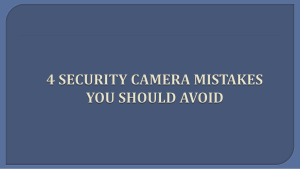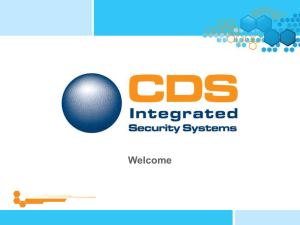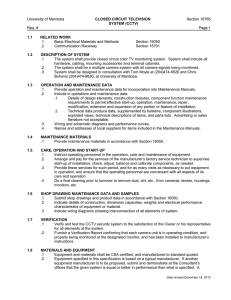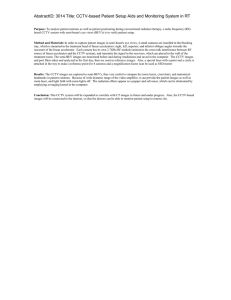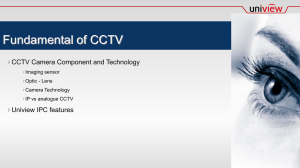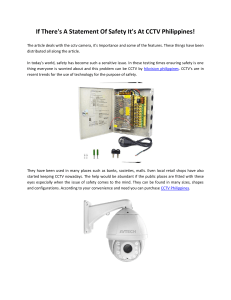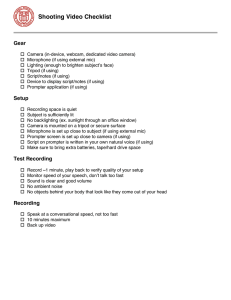Introduction to cctv
advertisement
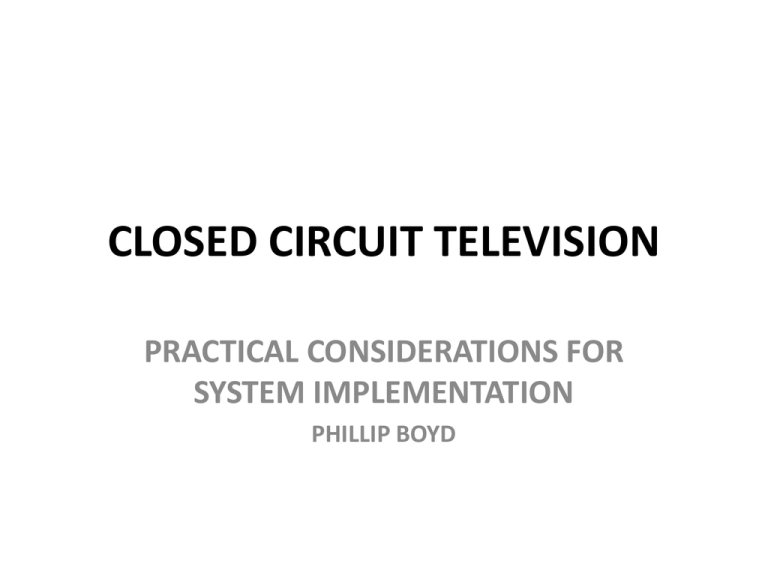
CLOSED CIRCUIT TELEVISION PRACTICAL CONSIDERATIONS FOR SYSTEM IMPLEMENTATION PHILLIP BOYD SYSTEM DEFINITION AND IMPLEMENTATION OVERVIEW • • • • • • • • • • Business Requirement Risk Assessment Operational Concept Requirements Analysis Functional Technical Support Budget: what resources are available? Through Life Support: specialist skills, recurrent costs Constraints: legal, technical, perception, commercial SYSTEM DESIGN PHILOSOPHY • CCTV is one part of the solution, and not a panacea for public safety and security • Improve public perception of safety • Deter and displace anti-social behaviour & crime • Provide usable, high quality evidence • Integrated with the environment • Consider user/corporate/statutory requirements • Understand constraints, mitigate or design out • Ensure support is straightforward TYPICAL CONFIGURATION CAMERA SELECTION • Select camera/housing based upon: – – – – – – Areas requiring coverage, level of detail and resolution Distance from camera to target area, and streetscape Environmental conditions (e.g. hot/humid; cold/icy) Vandalism risk – appraise threat, choose solution Whether operational use by police or council required Planned system life, durability and upgradability NETWORK SELECTION • Select CCTV network based upon: – Need for centralised monitoring/recording or stand-alone cameras – Existing network infrastructure (optical fibre/copper/wireless) – Ownership of assets (lighting poles, power poles) – Distance between cameras and recording/ monitoring site – Potential system growth or reorientation SYSTEM POWER • Powering can be problematic – Civil/Electrical works and pole leasing costs – Trenching/traffic management/MoUs/RoW – Is mains readily available? Is solar an option? – Low power CCTV systems, standby modes, movement activated in remote locations/depots VIDEO STORAGE • Video archiving is vital – Evidence preservation – Local to camera or centrally – Recording period and video quality – Protocols for access and release ENVIRONMENTAL FACTORS • Trees, sculptures, temporary structures will affect coverage – landscaping is an important factor • Light doesn’t bend – much – so the camera must be able to view the target • High variance in illumination (light/shade) is not desirable (lighting uniformity defined in AS) • Architectural aesthetics may not favour even discreet CCTV positioning • Consider the effect of new or altered buildings RUNNING THE SYSTEM • Maintenance strategy to suit environment (inspection, cleaning, servicing if required) • Range of fault detection options (tamper, lens obscuration, incorrect camera position) • Consider bundled maintenance agreement with well defined performance criteria
